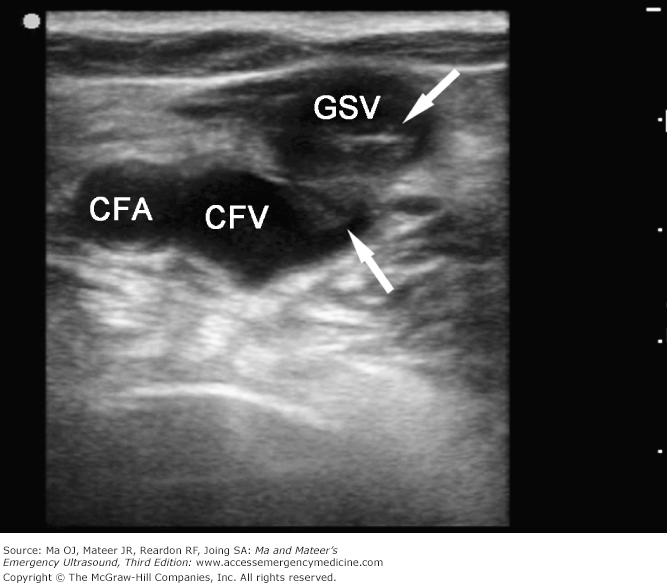[ad_1]
My career has been shaped by two critical experiences: burning out as a physician and witnessing the poor quality of clinical data as an analytics consultant for large payers. I realized that these problems are merely two sides of the same coin, and I am writing this article to help you as a clinical documentation integrity (CDI) leader realize how much your fate is intertwined with physician burnout, and how you can influence your organization to improve both your life and the lives of physicians.
If you have ever felt resistance from physicians to document “chronic systolic heart failure” instead of “CHF,” or felt frustrated by working with clinicians when they dismiss CDI as a “moneymaking effort,” I want to help you become aware that this has nothing to do with how good you are at your job or how well of a “physician educator” you are. The truth is that physicians do not need more education—they have had enough of it; all they want is autonomy and peace of mind. Data integrity is your job, not theirs.
In fact, the reason I am writing this article is to help you understand that success for you will mean making CDI invisible to doctors. The key here is to build a program that will work for your users, and by the end of this article, I hope that I can help you become more compassionate toward them. If you understand physicians, partner with them, and build a program they actually love, then your program will be truly transformational and cost-effective.
This article is broken down into three parts, each with a key takeaway:
- Understanding the history of physician burnout and building an alliance with physicians through compassion.
- Lessons learned from wellness programs and designing your program based on design best practices.
- What the end of physician burnout will look like and how you can step into a leadership role at your organization by being part of the solution.
I want to show you how you can lead the way, transform your organization, and enable clinical analytics. But to lead, one must first understand. This does not have to be hard or far-fetched. The first step of understanding is to not take things personally; then, you can build an unbeatable alliance between your department and the physicians in your organization. This will be your platform to launch a program that you will co-design with these doctor’s needs in mind.
I’ll narrate this through my own experience, interviews I’ve conducted with various subject matter experts, and the extensive research that has gone into the problem of burnout and the elusive integrity of clinical documents. Although this article mainly focuses on the United States, this is a global problem (or problem to be) that every corner of the world can learn from.
A Brief History of Our Compassion Crisis
The tension between physicians and CDI professionals does not surprise me. The field of CDI took off with the launch of CMS-DRGs in October 2007. In 2009, the Health Information Technology for Economic and Clinical Health (HITECH) Act was implemented, bringing the widespread adoption of electronic health records (EHRs). In November 2010, I moved to the US to become an intern physician at Tuft’s New England Medical Center in Boston.
One year later, I found myself leaving medicine, packing my bags, and going to San Francisco to be part of the digital health revolution. I wasn’t sure how, but I knew that in order to save myself, I had to leave the practice of medicine.
The reason was because my exposure to my seniors gave me a glimpse into how much struggle awaited me as an aspiring physician. I saw those who I looked up to experience temper fits, face despair, and feel in shackles. Everyone seemed to be chased by dreams, fears, or an attending physician that was about to start the rounds. At the end of my internship year, I was completely depressed, but I was not sure why.
The emptiness of that feeling was most visible as the physicians sat at their computers. Confronted with an EHR for the first time, I remember the confusion we all had around it and the stress that came from these screens. The HITECH Act helped the spread of technology, but it also spread misery for doctors across the nation who now had to sit after hours and document their patient encounters for reimbursement or fear of malpractice. In the first three years of its implementation, physician burnout had gone up significantly, and it created a palpable strain on the physicians and their relationships with both their patients and their families.
Tait D. Shanafelt, MD, is perhaps the most influential researcher on the topic. In 2015, he published a study of 35,922 physicians that showed how physician satisfaction and burnout have worsened from 2011 (45.5 percent experiencing at least one symptom of burnout) to 2014 (55 percent).1
More recent evidence shows that the situation has worsened since then. In 2019, EHR Intelligence published an article quoting Philip Kroth, MD, director of biomedical informatics research at the University of New Mexico, and his research that showed that up to 40 percent of physician stress is directly related to the EHR.2
By 2017, the Office of the National Coordinator for Health Information Technology (ONC) had declared that, according to an American Hospital Association survey, 96 percent of hospitals nationwide have adopted certified EHR technology (CEHRT), but only 52 percent of hospitals had access to patient data through their EHRs.3
During that time, I had joined the biggest boutique consulting firm in the US focused solely on data analytics. I was a senior clinical data analytics consultant in 2017, working with payers such as Kaiser, BCBS, HAP, and big hospitals on helping them create intelligence through the clinical data. That data was what has been gathered from hospitals over the eight years since the HITECH Act was implemented and curated via the newly popular health information exchange (HIE).
One of the chief technology officers I worked with whose company covered over 85 percent of their state’s population told me, “I think we need to build our own health information exchange.” It was a bold statement but was a result of the poor results of HL7 integrity and standardization tests that we conducted on the clinical data. In many cases, we could not even identify which provider did which procedure. We could only retrieve 20 percent or so of the data, and it failed all our business cases: disease management; fraud, waste, and abuse; risk adjustment; and Healthcare Effectiveness Data and Information Set (HEDIS) reporting.
When we traced the problem all the way back to the data entry point and looked at everything from variability in EHR system to physician incentives and hospital culture, I realized that the problem comes from the same place I came from: physician misery. Doctors aren’t inputting accurate information that we can use for analysis. I remembered my seniors from seven years before, hunched on their computers and utterly befuddled with the documentation burden.
My life had come full circle, but it was a frustrating end and beginning. I was locked in the bureaucratic war on both ends—in 2010 as a physician and in 2017 as a clinical data analyst. Since then, I have become fascinated by the problem and dedicated to being part of the solution.
I had the chance to speak to Gabe Charbonneau, MD, a Montana family medicine doctor who is leading a physician grassroots movement called Medicine Forward and the Fightburnout.org initiative. Charbonneau is driven by his nostalgia of how his relationship with his doctor was as a child, compared to the structural difficulties he faces to do the same for his patients now as a doctor.
“When I was 6 years old, my mom took me to our local family doctor for an itchy rash with bumps that was spreading on my body,” Charbonneau says. “I remember a few things from that experience. The most vivid was the gentleness and care that I was given. My diagnosis was simple, molluscum contagiosum, but my mom and I didn’t know what it was, and I went into the visit feeling scared. My doctor knew exactly what I needed. He wasn’t rushed. He wasn’t distracted. He was fully present and compassionate with me. And when he gave my problem a name and confident reassurance, my fear melted away.”
I stumbled upon the Fight burnout website as I educated myself about physician burnout. I filled out a contact us form and got a very personable reply from Charbonneau himself within hours. He explained how he wanted to recognize “Burnout Warriors” in the healthcare field by sending a T-shirt and a handwritten thank-you note to everyone working on ending physician burnout.
Charbonneau sent one of his T-shirts to the highly influential Eric Topol, MD, author of Deep Medicine (where he describes the use of artificial intelligence to relieve the doctor from documentation burdens) and a recent New Yorker article about the need for physicians to organize. When they connected, they decided to start Medicine Forward, a grassroots physician’s movement that is “obsessed with creating a better future for patient-doctor relationship.”
“The rest is history,” Charbonneau says. “The lesson from that day from my childhood is exactly what this group is fighting for: a return to humanistic care as the best medicine for all of us. And we fully believe that it’s not just a ‘nice to have,’ but a necessity. We want enough time to be fully present with our patients and be the best physicians we can be—to be masters of our art. No distractions from cumbersome EHRs and bureaucratic tasks that add negative value to the care we provide. We want incentives that are actually aligned with the long-term health and well-being of our patients and ourselves.”
Charbonneau’s work made me reflect on how technology has worked against us in the healthcare sector. It is up to us to make it serve us better. The EHR that has given rise to the CDI industry has been implemented in a way that has hurt physicians greatly. The point I am trying to make, and if there is one thing I’d like you as a CDI leader to understand, is this: Physicians don’t need education on technology; they need to heal from what the technology has done to them.
It is a grim reality, but those of you who face it will be successful in their careers. If you want physicians to make your life easier, you’ll have to understand why theirs have become so miserable.
Action Step #1: Build an Alliance Rooted in Compassion
Find the most influential doctors in your organization and reach out to them about burnout. Do not bore them with the details about CDI; just let them know that you are interested in the topic, and that you have found an organization called Medicine Forward that provides them with support.
This will allow you to establish the first and most important step: trust. This makes them feel that you care. If you want to go all out, purchase a few Fight Burnout T-shirts and give them as gifts. Even a simple gesture such as that opens up space for true collaboration with physicians. The message you will be sending them is this: I recognize your pain and care about making it better.
Key Takeaway: By offering a compassionate understanding toward physicians, you will automatically be on the right path. Then, it is just a matter of time before that trust turns into collaboration and, finally, change.
A Deeper Understanding of Physician Well-Being Post COVID-19
Now that we have covered the history of the tension, let’s look at the current circumstances. Building a CDI program post-COVID-19 means you have to understand the current context. The first step of good design is empathy.
In a recent podcast, shame researcher Brené Brown interviewed Emily Nagoski, PhD, and Amelia Nagoski, DMA, about what causes burnout, what it does to our bodies, and how we can move through the emotional exhaustion of it.4
They describe the stress cycle as a deer running in the wild, and right behind it is a fierce lion with sharp teeth and a powerful roar. The deer is loaded with adrenaline and runs faster until the lion suddenly catches up with it and latches on with its teeth into the deer’s left calf. In that moment, the deer moves from fight or flight to freeze. At this point, the deer can’t do much more than give in to the excruciating pain and wait for a chance to recover and run to safety again.
Ashley Rodriguez, an ICU nurse practitioner and researcher at the University of Southern California, passionately explains how the pandemic has affected doctors “The higher the code, the longer the recovery” she says. I didn’t understand what she meant at first, but she explained: “In trauma units, we say that the higher the code [the more serious the trauma], the longer the period it takes for patients to recover. We used to say that about patients, but now we look at the effect that this pandemic had had on the emergency room physicians themselves.”
She makes a critical point: The effect of the pandemic will not end abruptly. This will likely have a biological effect that would linger on for years. Doctors on the front line are at war right now, and the aftermath will take some time to get over. Building the right CDI program for them will require patience.
During 2020, not so far from where I used to live in San Francisco, a medical student lost his colleague and best friend to suicide. His story is a common one, but he decided to turn his grief into action. Nikhil Rajapuram, MD, dedicated his last year of medical school to become the first medical student to lead a research study focused on medical student burnout.
The published study was the first of its kind to look into the drivers behind medical student burnout. Their survey of 3,000 medical students over the US shows that the levels of distress and burnout are increasing despite the attention and efforts put toward this issue. What they found is that there were a lot of assumptions about the drivers behind distress that are more structural than individual in nature, such as grades and board exams.5
“Burnout in medical education is what designers call a wicked problem,” Rajapuram says. “The more you look into it, the more you realize its complexity and the challenges of solving it.” He was also a designer at Frog Design and has written about how taking a human-centered approach to burnout can help organizations de-risk their investments in programs that aim to engage physicians.6
This is not meant to discourage you, but to help you bypass a trap that most “Chief Wellness Officers” fall into. In 2018, there were only a handful of them.7 That same year, a study was published showing that a corporate wellness intervention did not improve burnout and was actually perceived as paradoxical worsening burnout for many residents.8
But no one listened. Generic programs continue to grow in size and effort while the burnout levels continue to rise. In 2020, I fell into this trap myself. My research and journey of discovery was rewarded with a grant to design a wellness program for doctors. The results were not what I expected.
The Road to Burnout Can be Paved by Really Good Intentions
We designed a mobile platform that would connect to wearables, help doctors keep track of their health goals, and pair them with a certified health coach. We designed a three-month program to help physicians learn how to create habits and stick to them. We brought on health experts that covered exercise, nutrition, sleep, burnout, relationships, and the basics cognitive behavior therapy.
We recruited 12 doctors and then did a thorough qualitative and quantitative analysis. We measured nine lab biomarkers before and after the intervention, had everyone wear a Fitbit during the duration of the program, and conducted validated burnout surveys every month as well as a user experience interview before and after the program.
The results were promising on the surface. At a glimpse, the Well-Being Index, a Mayo Clinic validated tool for measuring physician burnout, showed slight improvements (decreased) as well as an overall increase in wellness as measured by the biomarkers.
The qualitative research seemed to confirm this success:
“I went from not knowing what to do to understanding what did work and what didn’t work.”
“A simple goal and achieving it. A good feeling.”
“Sleeping habits – reading before I went to sleep. I felt that I was achieving something. But bit by bit.”
“I’m more inclusive of my diet (colors of the rainbow) – I’m more aware of my food habits. Since logging my food.”
However, much to my disappointment, none of these trends were statistically significant. We did find one surprising significant change, though, and that was that the cortisol levels of the group increased over the time of the program. That finding left me confused and feeling empty.
How can a program that was designed to help doctors deal with stress actually increase it?
When I went back to the interviews we did with the doctors with a more open mind, I found the answers very clearly. Despite the many benefits of the program, I forgot to take into account that many of these doctors are overachievers, and even a well-intentioned program can cause them to feel guilty and disappointed in themselves for not “getting it right” when they missed a habit, class, or did not hit their goals.
Here are the statements I found, and the reason why you should always conduct user experience interviews as the first step of designing any program.
“I was really upset – I would tell myself not to be lazy. I would feel guilty. It was challenging to stay motivated from week to week”
“I felt guilty. It’s so simple, why didn’t I do it?”
“The idea is that I wasn’t able to commit to the program, so I was upset that I couldn’t continue with it. Due to external factors, it was overwhelming.”
“The embarrassment of not showing up for the program.”
“Demotivated. When I lost one day.”
“I felt guilty toward myself and my coach.”
Mark Gouston, MD, a renowned psychiatrist who has saved countless lives from contemplative suicide and the author of the book Why Cope When We Can Heal?, explained the syndrome of disavowed yearning to me.
“There is a pain that high achievers often feel when they try to substitute the warmth and support that might have been lacking from their parents with the conditional approval of co-workers or management. This quickly proves to not be sustainable.” He took a long pause. “You know, the reason I never lost a patient to suicide is because I compete with death over feeling their pain. When a doctor gets to a certain point of that yearning and does not get the conditional nods that they need, often death is the only thing that can take away that pain.”
If you understand this about physicians, you can save yourself a lot of pain and money when designing your CDI program. But, furthermore, you have to think about how your program helps physicians address their needs. This is how you can form a powerful alliance and continue building the trust.
Shapiro et al. published a seminal research in the American Journal of Medicine on the hierarchy of wellness interventions on the systems level. They outlined five levels toward health professional hierarchy: Basics, Safety, Respect, Appreciation, and Heal Patients and Contribute. Without the first four, we can’t have the last one.
Action Step #2: Design a Doctor-Centered CDI Program.
Instead of trying to herd doctors into training, how about organizing a brainstorming lunch with them? If you have done the previous step well, doctors should be willing to sit and chat with you. Explain that your CDI program aims to decrease their burnout first and foremost. Find the champions that would be willing to design the program with you based on physician needs.
Key Takeaway: Doctors will continue to suffer for years to come because of the trauma of burnout and its amplified effects in the pandemic. Forcing a certain program on doctors without building it with them will not be sustainable. Instead, co-design the program with them after you have established a reputation as a compassionate colleague.
How to Lead Out of This Crisis: A Balanced Scorecard
A cardiologist and meditation teacher, Jonathan Fisher, MD, FACC, has taken it upon himself to organize and lead the Ending Physician Burnout Global Summit, bringing together over 40 world-class speakers to “make burnout history.” The first summit, held in August 2021, is one of the strongest responses to what we now know to be a catastrophic and costly crisis. The conference tackles both solutions on the individual level but, more importantly, solutions on the structural and organizational levels as well.
David Logan, PhD, faculty of the American Association for Physician Leaders, and writer of the Tribal Leadership: Leveraging Natural Groups to Build a Thriving Organization, explained to me how the stigma is a huge part of the problem. “Phrases are really important in organizational communication. One area where organizational burnout has been destigmatized is the Navy Seals. If it wasn’t for the phrase of ‘wounded warrior,’ that would not be possible. The problem with front-line workers is that they are regarded as heroes. The problem with that is that Batman doesn’t ask for help.”
Logan went on to explain a model that was developed by the NFL, where a five-step process takes players form burnout to wellness. “What gets measured, improves. The reason why this NFL program is successful is because the problem is well understood, and it is baked into all organizational decisions.”
What Logan describes is the idea of adding burnout onto the organizational balanced scorecard, and that provides a glimpse into what the future holds.
Health economics, the same driver that gave rise to CDI to increase reimbursement, has shone a bright light on the gargantuan costs of physician attrition and recruitment. Another study in 2019 showed that physicians cost an estimated $4.6 billion each year. That is about $7,600 for every physician that leaves a hospital.9
Alison B. Comfort, a health economist with a PhD in health policy from Harvard University, helped me understand that PR may be just as important as the healthcare economics argument. “We can start by reporting the consequences of physician burnout,” she says. “How many days of work are lost due to different factors related to mental health? How does it affect women versus men? Once these relationships are established, we can create a story around this problem beyond just the numbers. Many of these issues can be solved by publicizing this one story that creates positive peer pressure to seek out mental health resources for example.”
Comfort has spent much of her time rigorously assessing behavioral interventions around contraception at the University of California San Francisco. She recounts that when stories of men going on paternal leave at her university became known, other men started feeling OK for going on leave as well. That kind of positive peer pressure and support can cause huge ripple effects. The same goes for having champions within a department to encourage seeking mental health services.
This is crucial for you, CDI leaders. If burnout is rampant in your organization, you would not be able to improve clinical data that much. It then follows that management cannot expect your CDI program to be more effective than their measures to decrease burnout at the hospital. Once you have forged an alliance with physicians and designed an inclusive program, now you need to push together for complete transparency on the state of physician burnout in your organization.
Charbonneau, the leader of Medicine Forward and Fightburnout.org, shared his screen with me one day and showed me a map of the United States showing which states still ask physicians questions about mental health that are illegal based on the Americans with Disabilities Act. “Some of these states are in sync with the act, others are not,” he says. “It takes seeing it to be able to cause any change. If we don’t know what is happening, we all think it is normal. The first step in leading the change out of physician burnout is to have it be represented on the dashboard next to profitability and cost.”
As I finish this long article, I am wearing an original #FightBurnout shirt that Charbonneau gifted me, and I sit and imagine a world where we can see burnout just like we can see heat waves on a climate map. I think of climate change, and how seeing the problem is a huge part of the solution.
I hope I have convinced you that physician burnout is a key challenge to your work as a CDI professional, and that you feel moved to act on it and be on the right side of history. Remember, there will be those who resist doing things differently. The successful ones, in my opinion, will be the ones who understand that we can’t afford to wait any longer, to be compassionate toward physicians, collaborate with them, and help organizations quantify the problem.
Action Step #3: Push for the Regular Measurement of Burnout Using the Maslach’s Inventory or the Mayo Clinic Well-Being Index.
Key Takeaway: Calibrating your management’s expectations of your program to the extent of physician burnout in your organization will protect you, your CDI program, and the lives of your physicians, further deepening the trust you have built with them.
In synopsis, here are the three things CDI leaders can do to end physician burnout:
- Champion a compassionate conversation with physicians and forge a powerful alliance. Help your departments understand the issue. Build community and communication channels between them and doctors. Think about it: You control reimbursement and doctors control the service provision. Together, you are actually unstoppable.
- Design your program with intention and best practices. Save your department a lot of costs and ensure that your CDI programs are being built for your users. This is where you leverage the community and trust you have built with physicians to maximize your program’s ROI and position it as a true solution. The whole problem was created because EHRs were not built for physicians. Do not fall in the same trap.
- Manage expectations by pushing for a burnout scorecard in your organization and get funding for your program. You are the stewards of data. If your job is to ensure CDI, and you know that it depends on physician burnout, then it follows that your management’s expectations should not exceed their effectiveness in controlling burnout. All of us need burnout to be visible. Coding professionals, doctors, and patients need this information to be transparent. It can easily be measured using the Mayo Clinic’s Well-Being Index or the Maslach’s Inventory.
Notes
Omar Shaker (omar@shaker.health) is the founder of ASHA Health and the analytics director with the California Center for Functional Medicine.
[ad_2]










